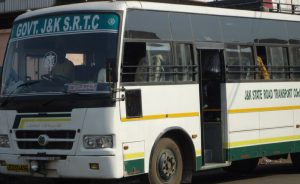Jammu & Kashmir Road Transport Corporation (JKRTC) is going for a major expansion of its existing fleet with addition of more than 500 new buses and trucks in phased manner as part restructuring plan to make once ‘bankrupt’ corporation a profitable enterprise.

After abrogation of Article 370 on August 5, 2019, it is a major expansion plan by the Corporation.
According to the officials in JKRTC, a plan is also being formulated to introduce more electric buses to add to the existing 40 Electric Vehicles (EV) operating in two capital cities-Jammu and Srinagar to reduce pollution.
Recently after launching 12-online services and e-Book of Transport Department, the Lt Governor Manoj Sinha had highlighted key measures initiated by the UT administration in strengthening the transport sector.
Those include targets by March 2021 to add 44 seater semi-deluxe buses, 20 seater deluxe buses, sleeper coaches and trucks to the fleet.
Lt Governor had also revealed that two major projects- the Institute of Driving Training and Research at Kot Bhalwal, and the Inspection & Certification Centre at Samba district will also be completed by March 2021.
Inspection of accident cases, the fitness of commercial vehicles and training would become streamlined and expedited with the start of these two projects. Lt Governor has entrusted upon J&K Road Transport Corporation the expansion of their fleet of buses in hope that the government-run buses traverse 20 lakh kms every month, increasing from its present average of 15 lakh kms a month.
A senior official told KNS that it has been decided to introduce more than 500 new trucks and buses in phases.
“We are receiving complete support of the UT government to transform the existing structure of the corporation. The reforms were pending for years. Old vehicles under the plan discussed with the government will be replaced”,
It is pertinent to mention here that starting its operation with a fleet of 50 buses after it was established in 1948 as Government Transport Undertaking in erstwhile J&K state, corporation was once a dominant player in public transport.
But years of mismanagement and corruption during 1980’s and 1990s led to its decline bringing it to brink of bankruptcy.